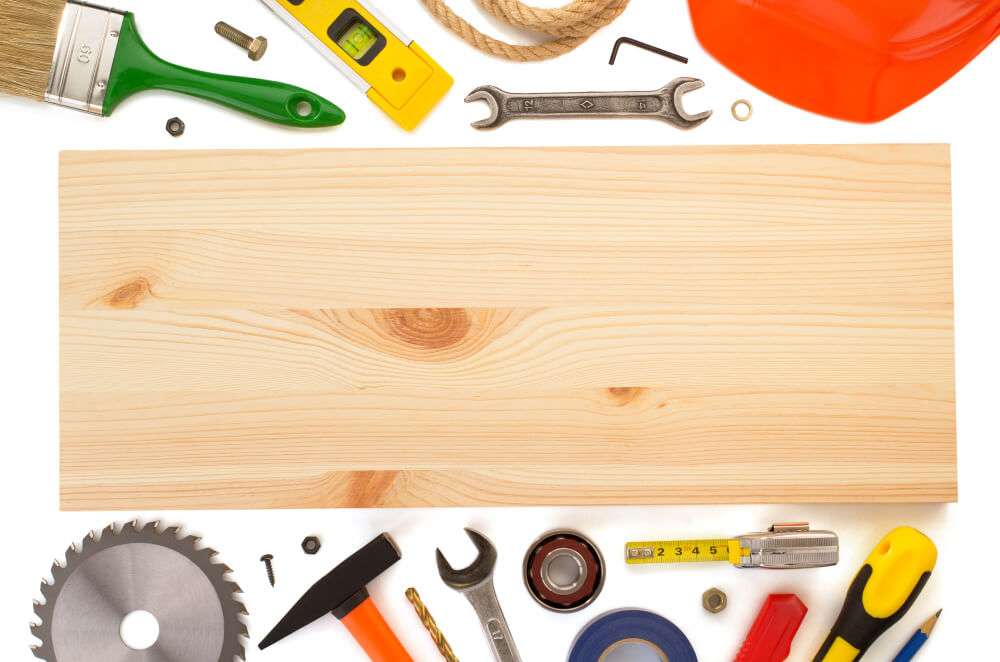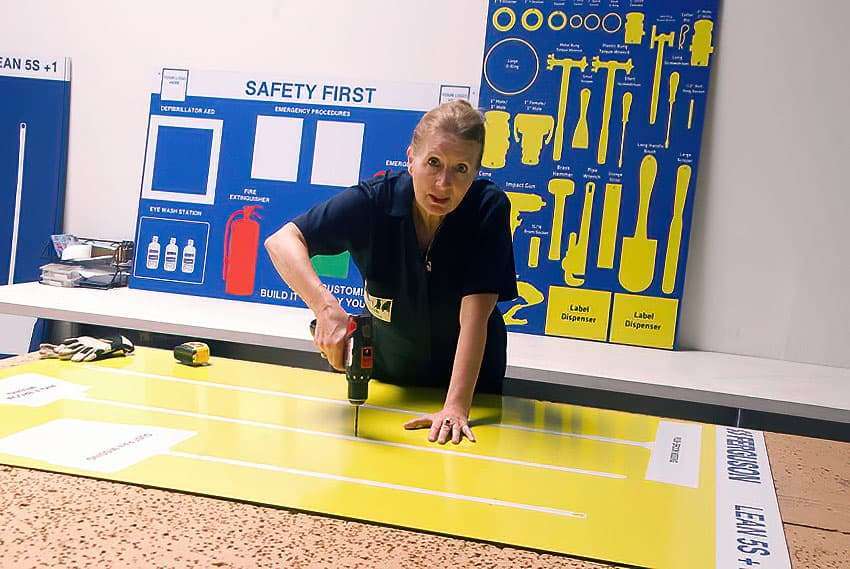
Shadow boards are an essential tool for workplace organization, providing a visually optimized storage system for tools and equipment. They help improve efficiency, maintain safety, and ensure that everything is in its place.
In this comprehensive guide, we will explore the different types of shadow board materials, their benefits, and how to create a custom shadow board for your workplace.
The Importance Of Shadow Boards
Shadow boards play a vital role in the implementation of the 5S strategy, which stands for Sort, Set in Order, Shine, Standardize, and Sustain. This system was developed in Japan and is designed to eliminate waste, improve flow, and reduce the number of processes in a workplace.
By using shadow boards, you can achieve the following:
- Organize tools and equipment in a visually optimized manner
- Reduce the time spent searching for tools
- Maintain safety by ensuring that tools are stored securely and correctly
- Standardize tool storage across workstations
- Sustain organizational standards through regular review and maintenance
Types Of Shadow Board Materials

Several different materials can be used for shadow boards, each with its advantages and disadvantages. The most common options for material shadow boards include:
1. For General Purpose Composite
- Suitable for basic maintenance usage
- Made from dual-layered aluminum with a plastic core
- The aluminum used in the making is 50 percent lighter than typical Industrial Grade Aluminum
- It has a temperature range of -60° to 180°F
- The board made from this also features anti-static properties. Moreover, it is easy to mold and shows fade resistance
2. Industrial Grade Aluminum
- Shadow boxes made from this material are comfortable for larger industrial usage. As well as it can be used in manufacturing, and construction also
- It Offers far better superiority, strength, and rigidity as compared to a general-purpose composite shadow box
- It is made for industrial purposes, hence it features corrosion-resistant properties
- Its Temperature range typically falls from -40° to 250°F
- Like the previous model, it is also easy to mold and has fade-resistant characteristics
3. Pro Series Acrylic
- It is constructed and designed for food processing and washdown environments
- As it was designed for areas where water usage is higher, its subsurface ink will not chip, peel, or deteriorate with time
- It has features of pressure washable and shows antimicrobial properties
- The temperature range is -30° to 190°F
Important Elements Of A Shadow Board Material
An effective shadow board should include several key elements that improve organization and visual communication. These include:
1. ID Tag
Label each tool on the shadow board to make it easier for employees to locate and return items to their designated places.
This helps to sustain organizational systems in the workplace and ensures that tools are always stored correctly.
2. Color Code
Use color coding on your shadow board to enhance visual standards and promote easier identification of tools.
This can help to overcome verbal and written communication barriers and improve the overall organization of your workplace.
3. Tool’s Shadow
Outline each tool on the shadow board to make the organization more visual and intuitive.
This makes it easier for workers to follow organizational procedures without having to think about where tools should be stored.
Benefits Of Using Shadow Boards
There are numerous benefits to using shadow boards in your workplace, including:
1. Effortless Traceability And Cost-Efficient
Shadow boards make it easy to track the whereabouts of tools and equipment. This allows for quick identification of missing or broken items.
Thus, it leads to immediate repairs or replacements, reducing downtime and unnecessary spending.
2. Strengthened Accountability
By providing a specific storage place for tools, shadow boards encourage employees to take responsibility for the equipment they use.
This promotes a safer and more organized workplace, reducing the need for constant supervision.
3. Promote Safety
Shadow boards not only ensure the safety of tools but also protect employees. It reduces the risk of accidents caused by improper tool storage.
Moreover, it also helps to maintain a clean and organized work environment, reducing the risk of slip-and-fall accidents and other hazards.
They also provide visual identification of the status of tools, whether they are in use or missing, eliminating the need for workers to search for them.
Steps To Create A Custom Shadow Board

Shadow boards are a great mode to organize and store your tools. It allows for easy accessibility and a visually pleasing workspace. To create one for yourself that fits your space and storage requirements, take a look at:
1. Choose Board Material
To create a custom shadow board, you need to select the proper shadow board material based on your needs. Shadow boards can be created from several materials such as plastic, wood, aluminum, or metal.
The material you choose should depend on the weight of the tools you plan to store, the space available in your workspace, and your budget.
For lighter tools, a plastic board may be a cost-efficient option, while metal boards may be a better choice for heavier tools. Wood is a classic and visually appealing choice for shadow boards, but it requires more maintenance and may not be suitable for outdoor use.
2. Identify Tools To Be Shadowed
This step is crucial in determining the size and layout of your shadow board. You need to make a list of all the tools you want to store. Then categorize them by size and frequency of use.
This will give you an idea of how many tools can be stored on the board, the space required between each tool, and the size of the board you need.
By categorizing them, you can decide which tools are essential and which ones can be stored elsewhere.
3. Select The Title And Background Color
Choosing a title for your shadow board may seem like a minor detail, but it can make a significant difference in organization and aesthetics. The title should be kept short, simple, and descriptive to easily identify the tools on the board.
Depending on the color of your tools, choosing a contrasting background color can also help with visibility. A white background with black outlines is a classic choice, but you can personalize your shadow board by using your brand colors or a color that pairs well with your tools.
4. Determine The Board Size
Now that you have an idea of the tools you want to store and the color scheme, it’s time to determine the size of the board.
The size of the shadow board depends on the tools you want to store, the space available in your workspace, and how you want to organize your board. Choosing a board that fits your tools and space properly will allow for easy accessibility and a cleaner workspace.
Be sure to measure the available space and the largest tool you have. However, don’t forget to leave a few inches to provide ample space.
5. Consider Adding Information
This is a total customization step and you can avoid it if you don’t have any idea. However, if you do have a plan then consider adding any necessary information such as tool labels, silhouettes, or storage instructions.
Labels can easily identify tools, while silhouettes can quickly show where a tool is missing. Storage instructions can also aid in organizing your workspace, reducing confusion, and maintaining cleanliness.
Moreover, you can also add additional information to your shadow board, such as a color-coding chart, company name, logo, or other images. For that, all you need to do is to provide a vector file or a high-quality JPEG
Conclusion
5s shadow board material is an invaluable tool for workplace organization. It provides a visually optimized storage system for tools and equipment. Whether you work in a manufacturing, construction, or food processing environment, a well-designed shadow board is an investment that will deliver numerous benefits for you.

